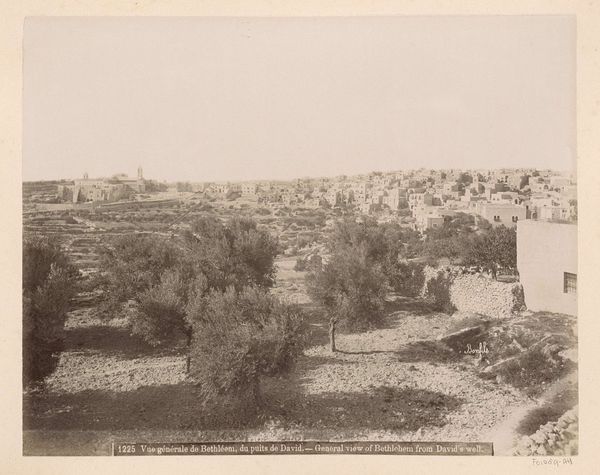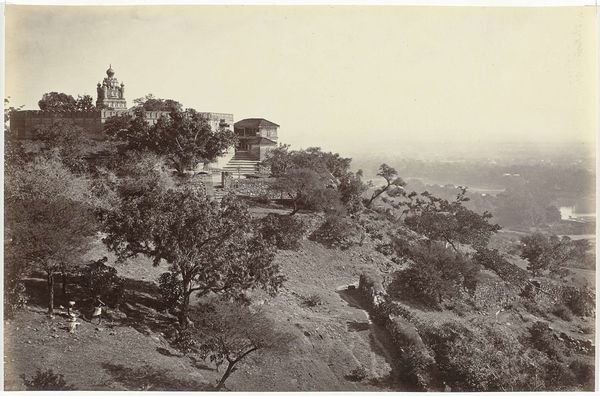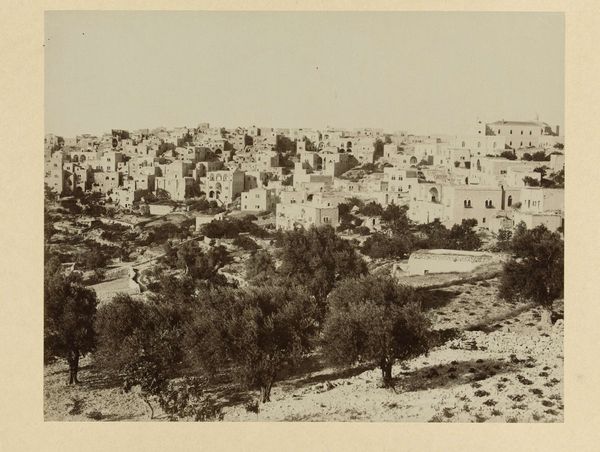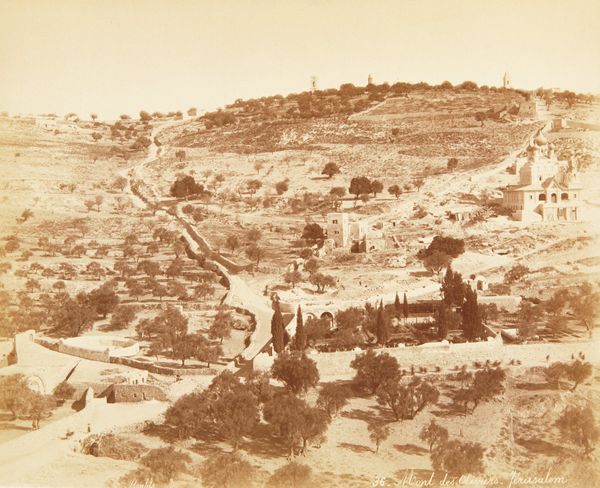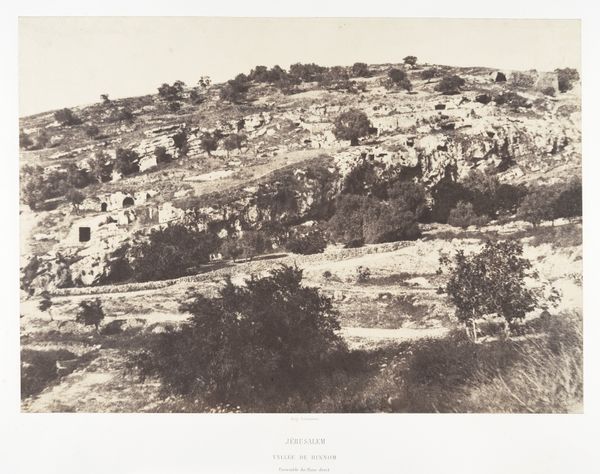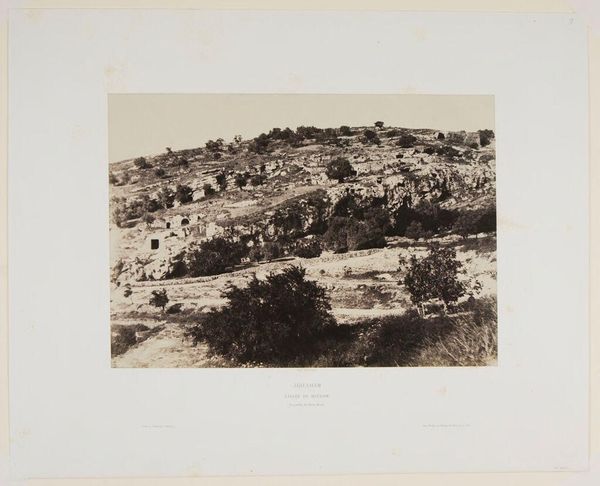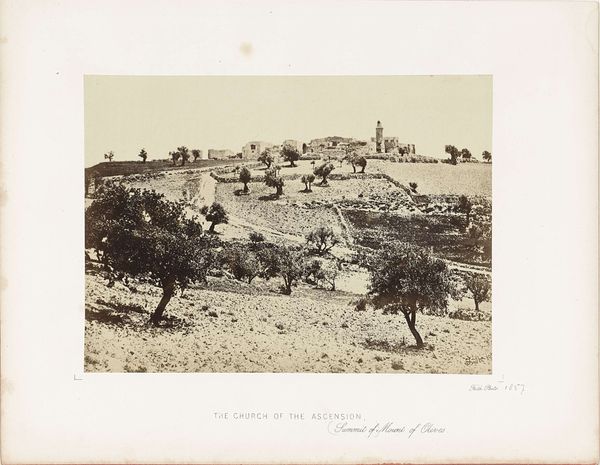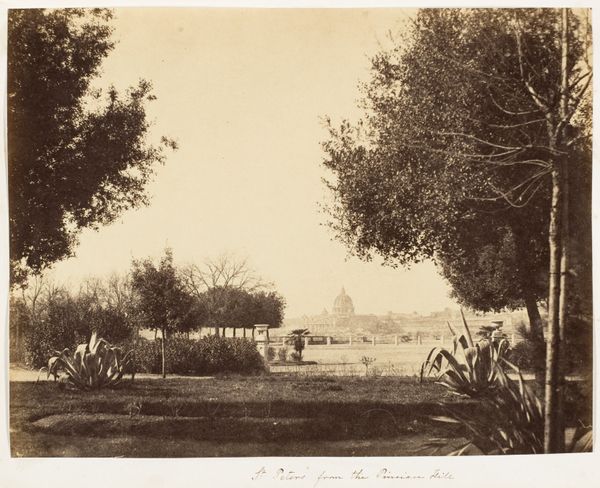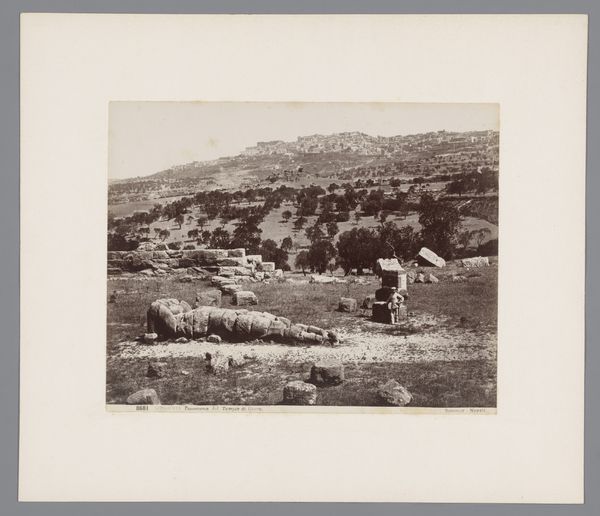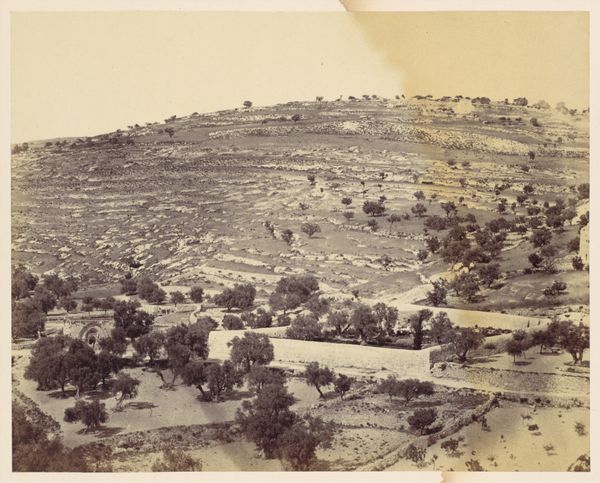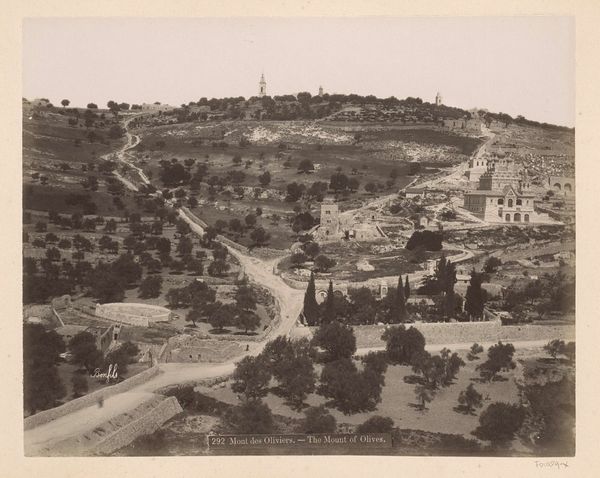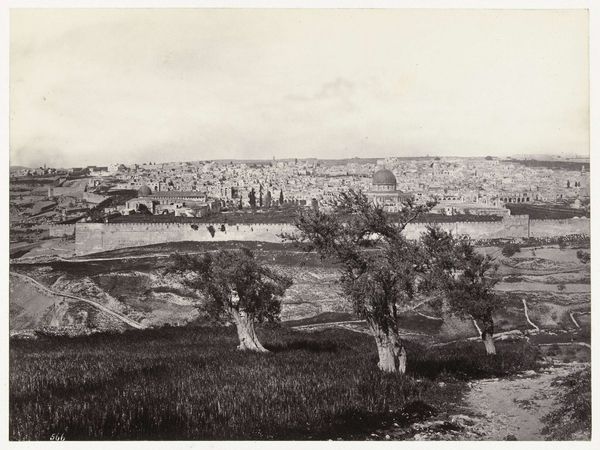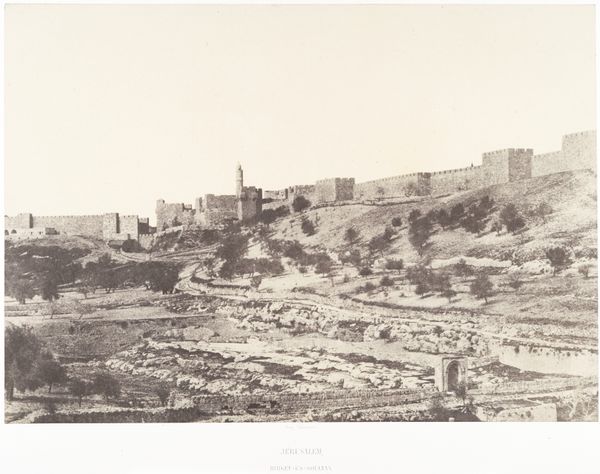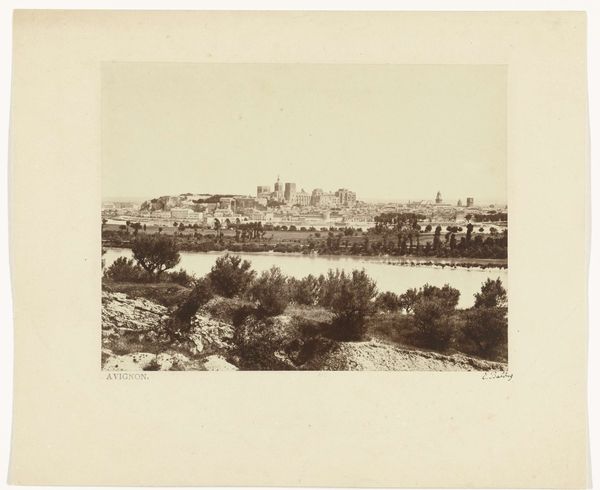
photography, albumen-print
#
landscape
#
photography
#
orientalism
#
albumen-print
Dimensions: height 224 mm, width 281 mm
Copyright: Rijks Museum: Open Domain
Editor: Here we have "View of Jerusalem from the Mount of Olives" by Maison Bonfils, an albumen print dating from somewhere between 1867 and 1895. The scene is neatly framed by the surrounding trees. What do you see in the photograph? Curator: Focusing on its formal aspects, I'm struck by how the albumen print process lends itself to this subject. Notice the tonal range achieved, from the deepest shadows in the foreground foliage to the delicate gradations defining the city’s architecture. The photographer clearly considered depth; how the overlapping of planes, from foreground trees to the distant city, creates a palpable sense of space. Editor: Yes, the texture almost feels three-dimensional. The placement of those dark trees, one on each side, feels intentional. Is there a name for that technique? Curator: Indeed. We might consider this photographer's conscious deployment of a 'repoussoir'. The strategically placed dark forms on the periphery actively draw the eye into the vista beyond. And consider the geometric elements – the horizontality of the city wall is juxtaposed with the organic shapes of the olive trees. Do you observe a conscious arrangement? Editor: The horizontals and organic shapes give stability, like I'm looking at the city from a safe space. Are you suggesting Bonfils was using formal elements to portray Jerusalem in a specific way? Curator: Precisely! While the subject matter itself certainly carries historical and cultural weight, it's through compositional choices like this layering, these tonal contrasts, and geometric arrangements that we perceive order, structure and ultimately, perhaps, a carefully constructed vision of place. Editor: Fascinating! Thinking about the interplay of these structural elements gives me a new appreciation for how much the photographer’s choices shape our experience of even seemingly straightforward landscape photography. Curator: Agreed. By examining the composition we move beyond simply identifying the ‘what’ to understanding the ‘how’ and ultimately, the ‘why’.
Comments
No comments
Be the first to comment and join the conversation on the ultimate creative platform.
